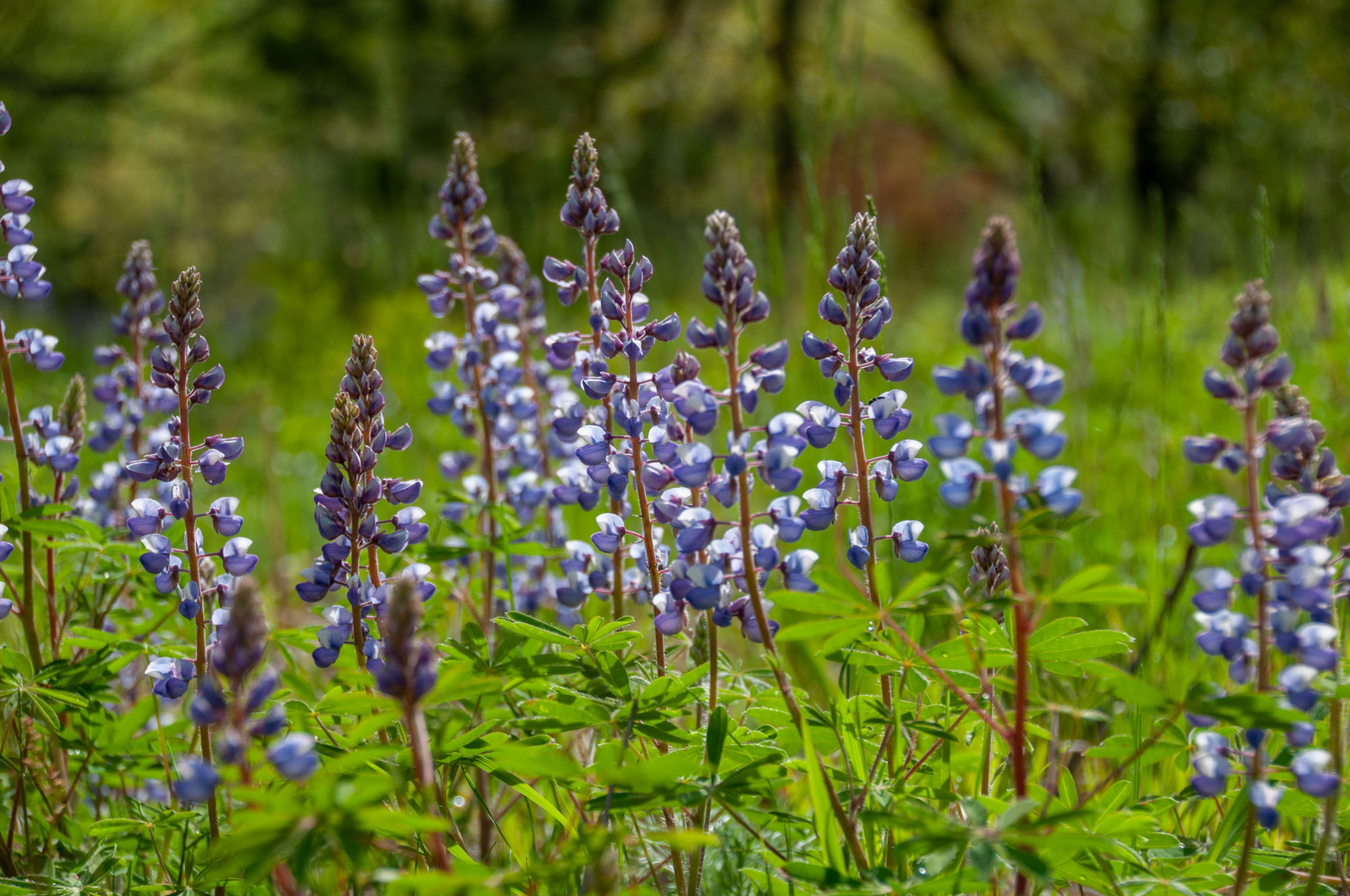
Where Once were Oaks
This post is excerpted from an article originally published in the Grand Valley State University College of Liberal Arts & Sciences e-newsletter, CLAS Acts, and is republished here with permission.
Anyone fighting a battle in a Michigan backyard with volunteer maple trees could be forgiven for imagining that the primordial state of our region was uninterrupted maple forests. That would be a less than accurate picture. In fact, at one time southwestern Michigan was included in the 50 million acres of what is known as oak savanna. As the Wikiwand website explains, “European settlers cleared much of the savanna for agricultural use. In addition, they suppressed the fire cycle. Thus, surviving pockets of savanna typically became less like savannas and more like forests or thickets. Many oak savanna plant and animal species became extinct or rare.” Concerted restoration efforts began in the 1970s in some areas, but a complete return to the primordial state and restoring the entire range of the oak savanna is impractical and may not be necessary to enjoy some of the benefits.
At GVSU, Associate Professor Priscilla Nyamai (professor of Natural Resources Management in the Biology Department) has been working with the Land Conservancy of West Michigan (LCWM), not to turn back the clock, but to conduct ecological restoration activities that help restore desired structural and compositional characteristics to the ecosystem. These restoration activities then allow the ecosystem to provide most of their critical functions, including maintaining high species diversity, providing wildlife habitat, and enhancing landscape resilience to emerging disturbances. Her work was the subject of a GVNext article last year.
Investigating the impacts of oak savanna restoration activities
Priscilla’s long-term study on oak savanna restoration is being conducted in two degraded former oak savanna ecosystems located in two LCWM nature preserves, one in Lowell (Bradford Dickinson White Nature Preserve) and another in Rockford (Brower Lake Nature Preserve). The study examines how restoration can help these degraded ecosystems. The restoration treatments consist of reintroducing fire in the form of prescribed burns, and removing unwanted trees that have contributed to closed canopies through a treatment called girdling, where herbicide is used to kill trees but leave them standing (instead of cutting them down). The dead trees (known as snags) are left standing to provide habitat for cavity nesters such as birds and other creatures, while opening up the canopy through the loss of their leaves. The experimental setup at each of the two locations consists of half of the site receiving treatments and half remaining untreated to serve as a control. Study plots are then set up at each of these two sections from which a variety of data is collected to examine ecosystem responses to these treatments.
Priscilla and her team of students have a multi-year research cycle where treatments are implemented in the odd years and data is collected in the even years. The study started in 2016, at which time baseline data was collected, followed by subsequent treatments and data collection. From the start of this project, Priscilla has always involved students in the research, especially by working with them out in the field during the summer. This summer, she is working with three students: Caitlin Hillman, Natasha Sokolow, and David Richards. Delaney Bandos and Andrea Achterhoff are students in the department who also joined her crew for the earlier part of the summer before embarking on their project with a colleague in the department later in the summer. “They’re excited,” Priscilla explains.
The research team digs deeper
While data collected in the long-term study has been mainly vegetation recruitment data (whether plants replace themselves generation after generation) to examine responses to treatments, the missing element seemed to be an understanding of what is going on below ground. So, Priscilla decided to conduct a study on this component by examining the plant-microbial interactions in the soil. Associate Professor Jennifer Winther was just the plant-fungal interactions expert Priscilla needed to work with to examine this critical component.
This microbial study will examine fungal richness, diversity, and mycorrhizal associations in the same study sites used for the long-term study and examine whether there are differences in these factors between the treated and untreated sections. The study will give them insights into the microbial interactions going on in the soil. The researchers hope to see what is going on inside the roots themselves and how the interactions provide benefits such as increased nutrition access (to nitrogen and moisture, for instance), resistance to pathogens, improved drought survival, and other changes in osmoregulation (the maintenance of constant osmotic pressure in the fluids of an organism by the control of water and salt concentrations).
“Almost all plants have these microbial interactions, but we rarely think of them. To understand the fungal community, we need to look at how many plants have these associations. The amount of work done to determine this so far is tiny compared to above-ground component. It is just in the last ten years that people realized they have to understand what is going on underground,” Jennifer says.
Priscilla and Jennifer obtained some external funding that allowed them to hire a student (Jake Stuck) to work with on this project. “The funding,” Jennifer notes, “through the LCWM is paying this student to work on the project for one season. Additionally, the Biology Department is working in collaboration with John Ball Zoo to support the project. The Zoo also wants to understand the fungal role in conservation and is interested in bringing back some oak savanna ecosystems.”
High-impact learning experiences for students
On a given day, the research team might collect 100 plants of 14 species. Their next steps are to clean the root, quantify how many fungal partners there are in these roots, and compare that between the treated and untreated plots. They look for fungal spores—how many there are serve as a proxy for the diversity of the community. They categorize size and look at diversity. They also look for a particular protein (glomalin) that is released into the soil during fungal turnovers. Glomalin is sticky, which helps with soil aggregation, hence improving soil structure, water filtration, and retention, among other benefits. By collecting soil samples from the same plots, they will be able to process the soils to determine the glomalin content.
“Field biologists are macro and a bit put off by the hundreds of hours they’ll be putting in doing the microscopy,” Jennifer notes as Priscilla laughs. “Jake will get a nice mix of field and lab work. It is important to know what part of it you love.” Once trained, Priscilla’s students work well as a group and independently. “The skills they develop are astounding,” Priscilla explains. “They learn to collaborate and experience different perspectives during their time on this project.”
“These are classic high-impact experiences,” Priscilla says. “Students get to use different equipment, work on plant identification and data collection, solve problems, etc. It really serves them well when they go for job interviews and the interviewer wants to know if they have had hands-on field experience, for example.” She also notes that Justin Heslinga, the conservation director at the LCWM, is someone her students interact with and learn from, and this allows them to network and put themselves out there for potential hiring.
“Our mentoring approach,” Jennifer says, “teaches independence. We have conversations about next steps, going to grad school—especially during those 40-minute car rides. We have them present at the Van Andel undergrad research fair and our regional conference Midwest Ecology and Evolution Conference (MEEC), which is run by grad students, low-cost, within driving distance, and allows them to learn about what other undergrads as well as grad students are doing.”
Featured Image: A prescribed burn crawls through the forest at B.D. White Nature Preserve, one of the research sites.




